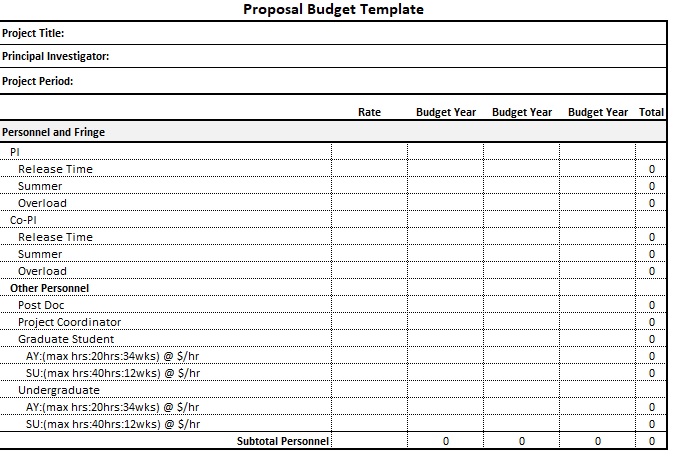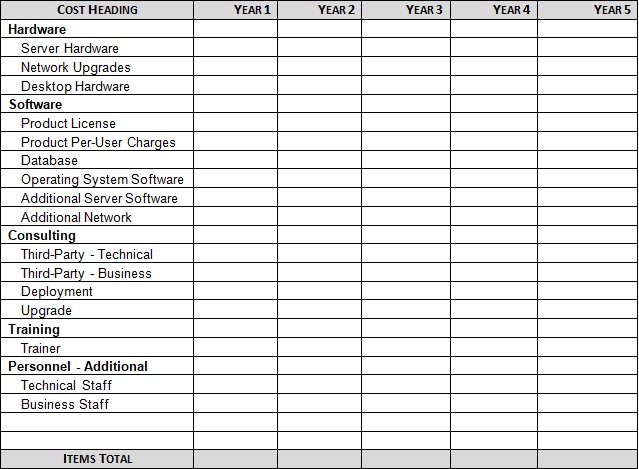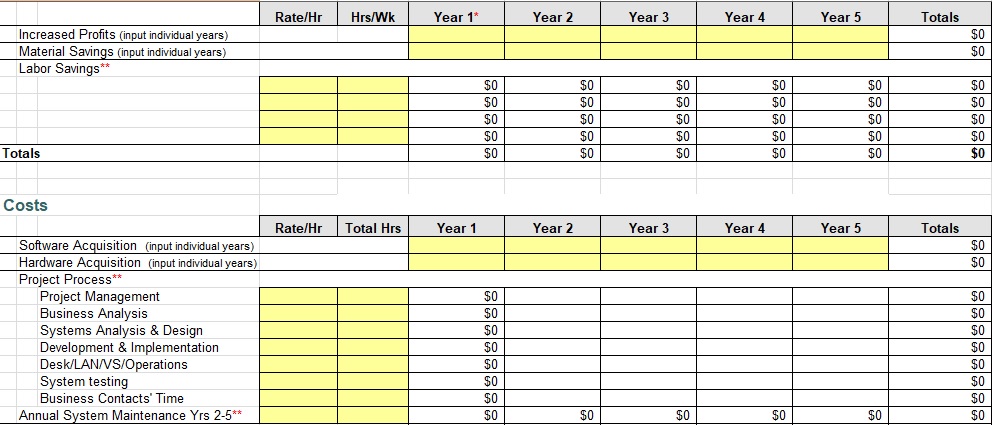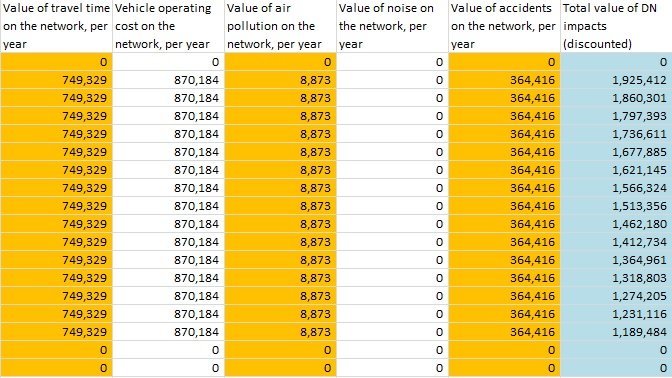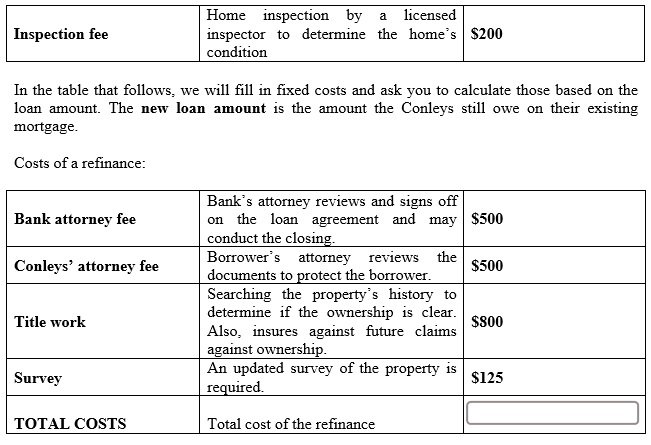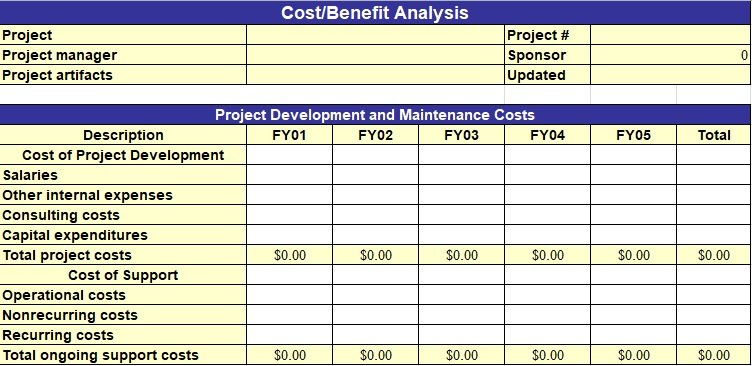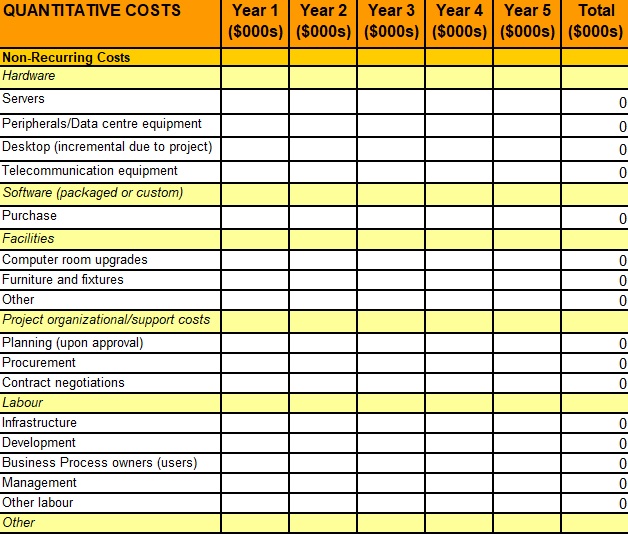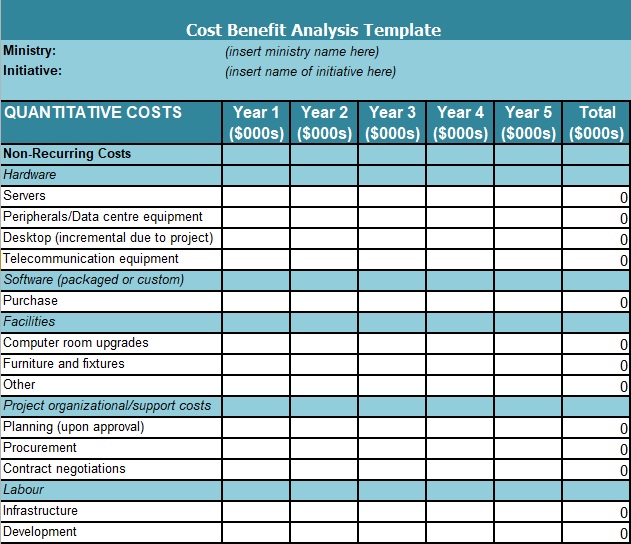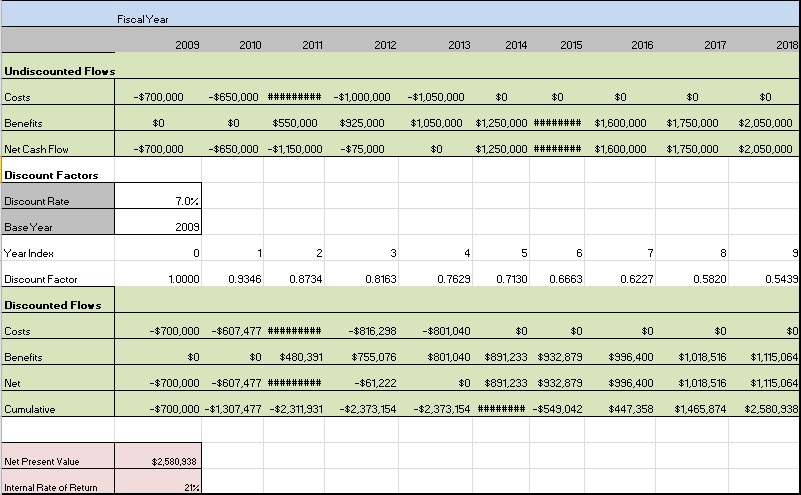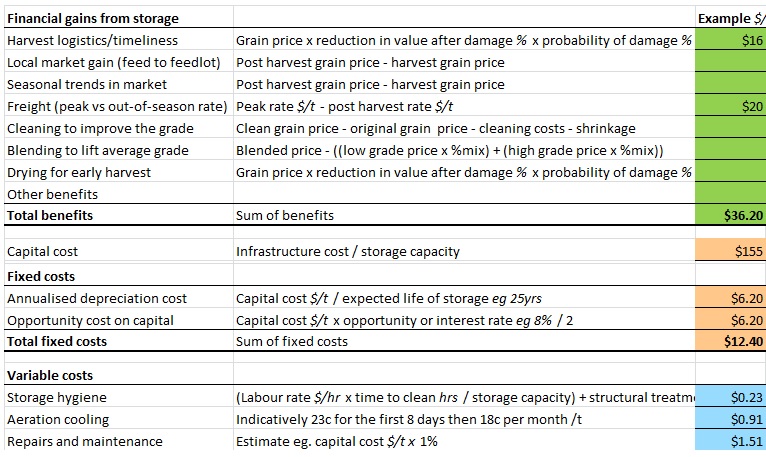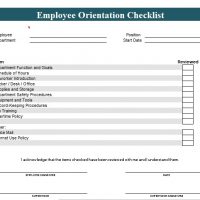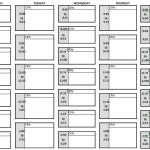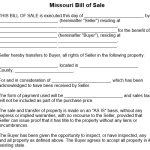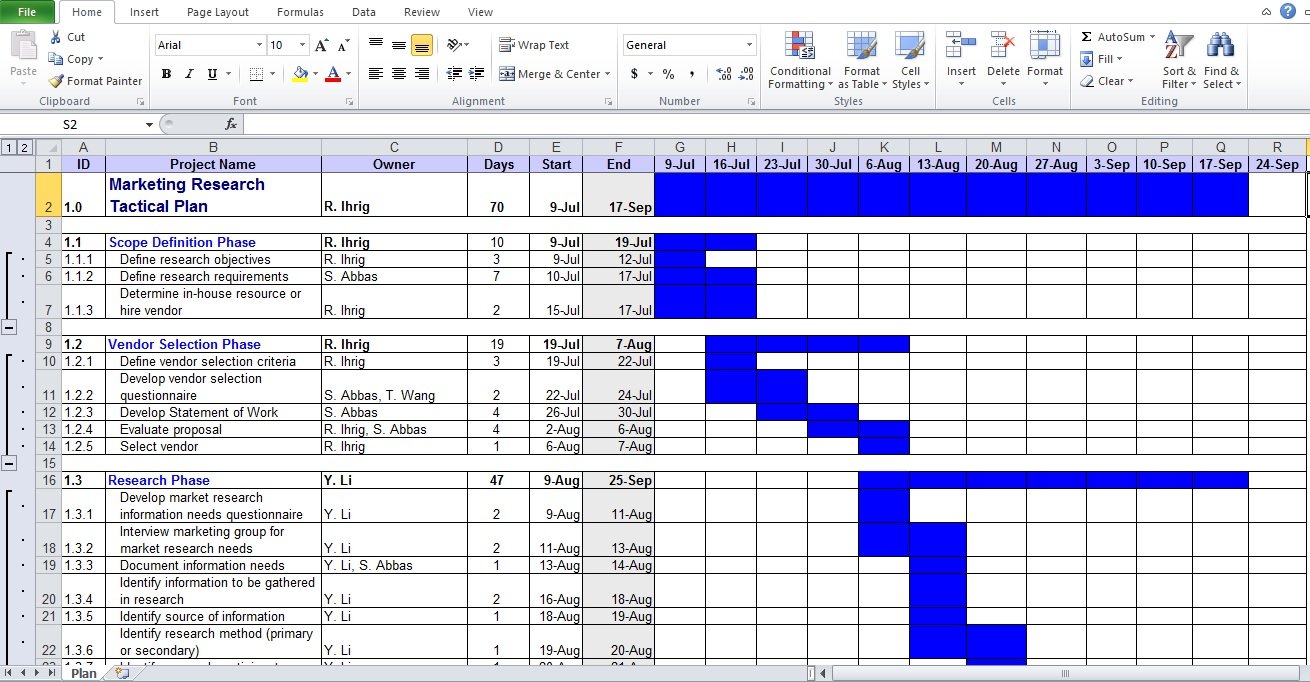The project managers use a cost benefit analysis template to determine the balance between the strengths and weaknesses of the project. This tool provides a framework that helps them in increasing project viability and efficiency.
Table of Contents
What is a cost benefit analysis?
A cost benefit analysis is a systematic approach to estimate possible profit from investments to achieve benefit. It is a process by which organizations analyze the strengths and weaknesses of the project and use the best procedure to achieve benefits. Furthermore, this analysis is performed for the following purposes;
- Creating a visual overview of an endeavor’s health
- Comparing two or more options
- Determining the feasibility of a project or effort
- Making the evaluation of new hires easier
- Deciding resource allocation
- Making purchase decisions
- Developing business strategies
Cost
Cost is the value of money that is used for investment. There are many types of costs used in cost benefit analysis.
- Direct Cost: It is directly associated with projects like the budget used for manufacturing, raw materials, and inventory.
- Indirect Cost: This cost is not directly associated with the system like the cost of electricity, utilities, and rent.
- Intangible cost: The cost that cannot be accurately assessed like human resources.
- Opportunity cost: It includes alternative investment.
Benefit
Benefits are desirable advantages gained from the total investment. Here are some types of benefits;
- Direct benefit: This type of benefit is specific and fixed.
- Indirect benefit: These benefits are not specific and fixed.
- Intangible benefits: These include benefits that are difficult to measure like improving employ’s safety and their satisfaction.
- Competitive benefits: These benefits are obtained through market shares as the result of decisions.
The essential components of a cost benefit analysis template:
Include the following essential components in your cost benefit analysis template;
Executive summary
This part of your document is the most important. Highlight all of your project’s details just in one paragraph. You should keep this section both concise and to the point. Additionally, you can use your project proposal to write the executive summary of the analysis.
Purpose
Write the purpose of your project after the executive summary. First, you have to specify the name of the project and your reason for performing the analysis while briefing about the project’s analysis. The purpose of performing this analysis is to identify a project’s feasibility. This means it explains how the project will be helpful for your business.
List of alternatives
In this section, write down the alternative approaches for your project as well as provide their description. Describe their current services, products, and market.
Costs
This is another important part of the analysis where you mention all of the non-monetary and monetary costs. Here, highlight the developing and operating alternatives that you discussed in the above section.
Benefits
The expected non-monetary and monetary benefits that your business can obtain from the project, highlight them in this section.
Summary
In this final section of your document, write the summary of the results along with presenting the facts and elements to make a comparison.
How to perform a cost benefit analysis?
There are three main steps to performing a cost benefit analysis;
Determining the costs
Brainstorm on all of the potential costs including payroll, equipment, training, licenses, travel costs, and more. Take into account non-monetary costs that may be relevant to risks, productivity, or uncertainties that can affect your project results.
Determining the benefits
Since specific intangibles may not have precise monetary values, it isn’t easy to come up with accurate projections of revenue. Hence, this step has more difficulties as compared to monetizing or identifying costs. Likewise the costs, you have to assign values to the benefits to indicate in present-value terms.
Comparing the costs and benefits
Start comparing the total amounts after writing down all of the benefits and costs. You may need to review your calculations if the two total values are very close or equal. Also, you may want to ensure that you haven’t missed or overlooked any benefits or costs.
Some examples of cost benefit analysis:
Let us discuss some examples of cost benefit analysis;
Cost benefit analysis for projects
A cost benefit analysis can be used to identify the viability of a new project or make a comparison between two project ideas. With this tool, the team can determine what a project may cost and what the positive outcomes are. To get a comprehensive picture, brainstorm before starting a project and pull multiple team members into the process. In addition, you can make the best decision for your business’s overall health by weighing the advantages, disadvantages, financial implications, and contributions to goal progression.
Financial cost benefit analysis
This type of cost benefit analysis provides a look at the overall financial health of your business. This may include net present value and cash flow. To understand better where financial setbacks are happening, break down the analysis by department. After identifying where setbacks are coming from, use the details to make adjustments to enhance financial health.
Cost benefit analysis for products
A cost benefit analysis for products is performed to;
- Identify the viability of new project ideas
- Measure the profitability of ongoing projects
- Determine bottlenecks and other issues relevant to a particular product
Download Free Cost Benefit Analysis Template
Simple Cost Benefit Analysis Worksheet
Project Cost Analysis Template
Product Cost Analysis Template Excel
Cost Benefit Analysis Template xls
Cost Benefit Analysis Example for Students
Cost Benefit Analysis Report
Simple Cost Benefit Analysis Example
Cost Benefit Analysis Template Excel
Cost Benefit Analysis Excel
Cost Analysis Report Template
How to create?
There are many ways to make a cost benefit analysis. You can use different formats as per your needs. It can be made from any format which is suitable and best for your situation and business. Consider the following important steps to create its format;
- Establish a framework that shows all areas related to your situation.
- Identify all costs, investments, and all possible benefits.
- Calculate all costs, and investments and look at benefits.
- Compare every benefit with cost with the help of given information.
- Analyze the final decision after comparing all areas.
FAQ’s
These are as follows;
1- Fixed costs
2- Explicit costs
3- Social costs
4- Implicit costs
5- Social costs
6- Replacement costs
The three main steps of performing a cost benefit analysis are;
1- Analyze all cost types
2- Analyze potential risks and impacts
3- Assess the cost benefit analysis


